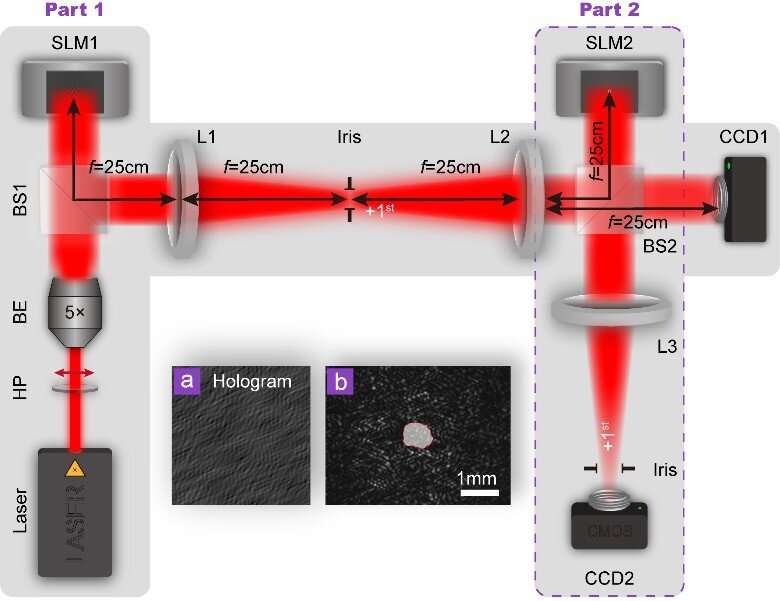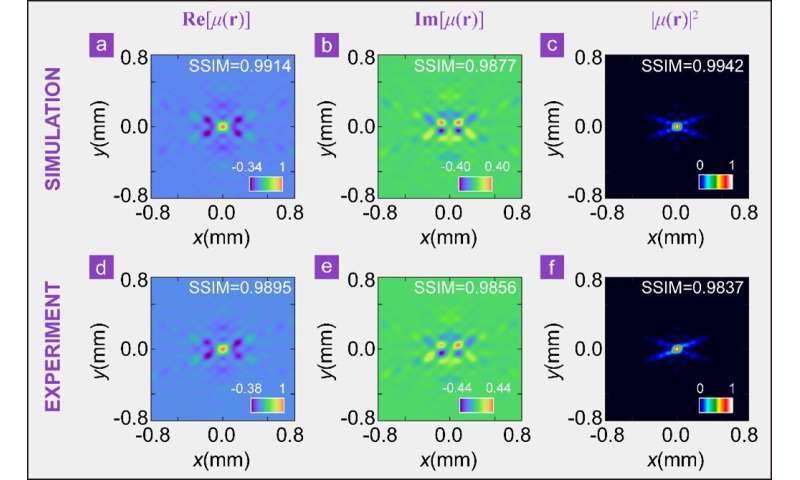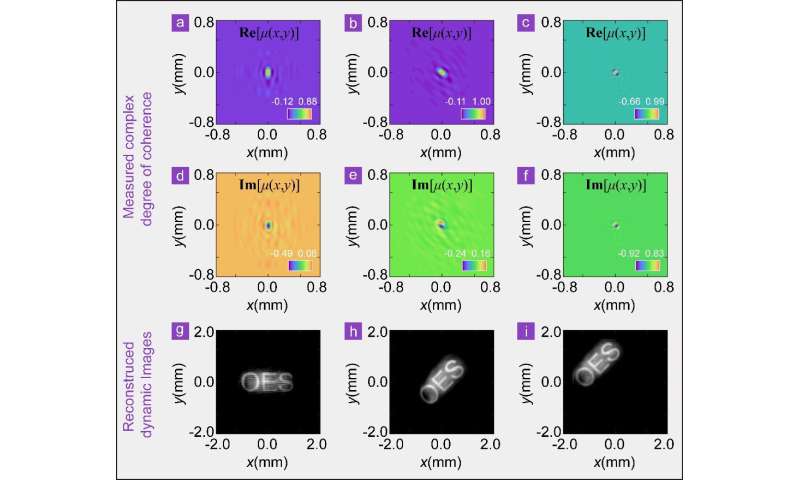This article has been reviewed according to Science X's editorial process and policies. Editors have highlighted the following attributes while ensuring the content's credibility:
fact-checked
proofread
A precise technology for the measurement of the optical coherent structure of random lights

Optical manipulation and applications involve numerous fields, such as physics, information, materials and life sciences. It has been included in the national "14th Five-Year Plan" major engineering and projects. To better promote manipulation and application of the light beams, developing precision measurement technologies of optical parameters (such as intensity, phase, polarization and frequency, etc.) is vital, which is also an interesting topic.
Compared with the fully coherent beam, partially coherent beams viewed as the dynamic random light fields are robust in complex environments. The amplitude and phase of random light fields fluctuate randomly over time.
Significantly, the valuable information is embedded in the statistical properties of random light fields. The optical coherent structure of a random electric field, as a second-order statistical parameter, can determine the beam evolution behavior, far-field intensity distribution and light-matter interaction.
Until now, the random lights with prescribed optical coherent structures have been found applications in coherence tomography, ghost imaging, super-resolution imaging and free-space optical communication. Recently, using the coherent structure of random lights as information carrier for high-security encryption and far-field robust imaging has also been proposed. The rapid development of optical coherence structures related research highly requires the precise measurement of optical coherent structures in return.
To fully recover optical coherent structure, as a complex function, we must precisely measure their real and imaginary parts (or amplitude and phase) simultaneously. The optical coherence structure has traditionally been measured using Young's interference experiment, wherein its magnitude and phase can be predicted based on the visibility and position of the fringes, respectively. However, this experiment only considers two position points.
Full characterization of the optical coherence structure requires that each point be scanned independently across the beam plane, which needs significant time and effort. Improvements to this experiment have been proposed, such as wavefront-folding interferometers, phase-space approach and self-reference holography, Hanbury Brown and Twiss (HBT) effect and generalized HBT effect have been developed to measure optical coherence structures.
These methods involve a complicated, misalignment- and vibration-sensitive setup, or are limited to Gaussian optical statistic. Despite all efforts, measuring the complex optical coherence structure remains an open and great challenge.
Recently, the research group of Prof. Yangjian Cai from Shandong Normal University proposed a robust, convenient, and fast protocol for precise measurement of the optical coherence structures of random optical fields via generalized Arago (or Poisson) spot experiments. It had rigorous mathematical solutions. This method only required to capture the far-field intensity of the obstructed random light beams thrice, and was applicable to any optical coherence structures, regardless of their type and optical statistics.
-

Fig. 2. Measurements of coherent structures of random light beams subjected to Gaussian optical statistics. Credit: Compuscript Ltd -

Fig. 3. Experimental results of the optical coherence structures and the recovered dynamic images. Credit: Compuscript Ltd
The simulation and experimental results of the real and imaginary parts of the coherent structure were achieved by this method. Compared with theoretical results, the structural similarity SSIM of the simulated and measured results are both higher than 0.98, which strongly demonstrated the effectiveness and accuracy of the proposed protocol.
In addition, they also conducted the measurements of the Schell mode sources and the non-Schell mode sources with non-Gaussian optical statistics. The relevant results were given in the manuscript, and proved this method was independent of the optical statistics and beam types of random light beams.
With aids of this protocol, they also achieved dynamic optical images encryption and decryption with random light fields, in which the coherent structure function of random light beams was used as the information carrier. A dynamic (shifting and rotating) optical image "OES" was encrypted into the coherent structure with a key.
In the lab, an ideal 20fps video can be decrypted. This technology has potential applications in the fields of optical information encryption, orbital angular momentum measurement, and optical communication etc.
The research is published in the journal Opto-Electronic Science.
More information: Xin Liu et al, Measurement of optical coherence structures of random optical fields using generalized Arago spot experiment, Opto-Electronic Science (2023). DOI: 10.29026/oes.2023.220024
Provided by Compuscript Ltd





















